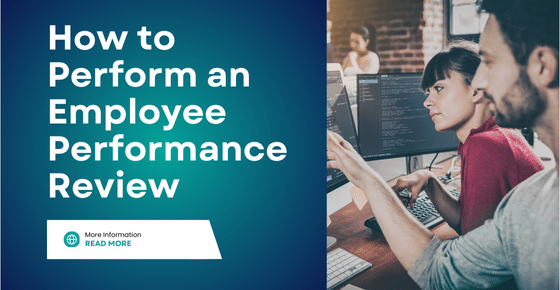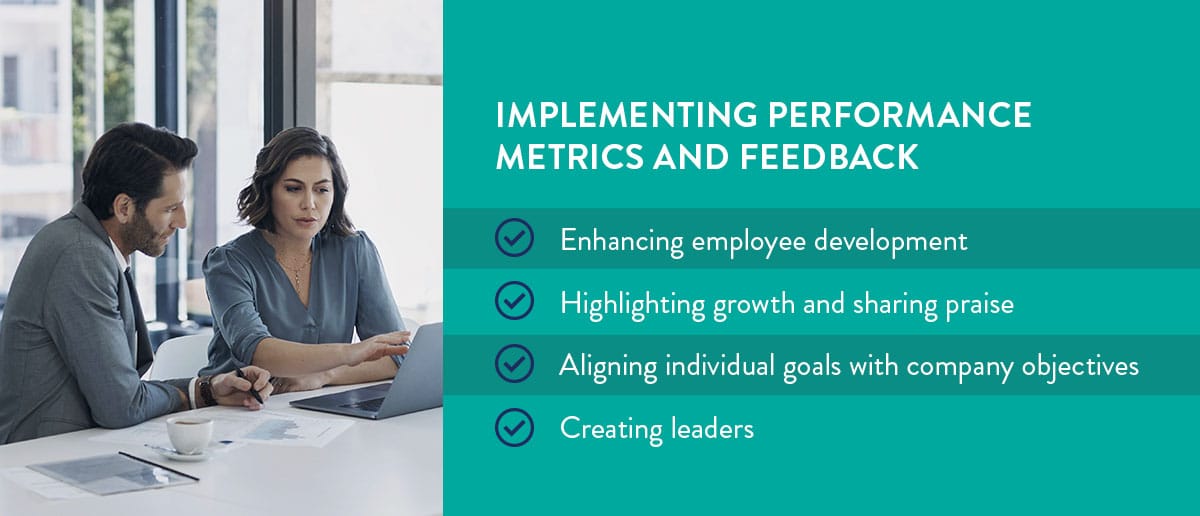Leadership
How to Perform an Employee Performance Review

Performance reviews help cultivate employee success and make individuals and teams more efficient and effective. However, performance reviews can be stigmatized, and you might receive criticism for them if you do not make them actionable and a positive experience.
Understanding how to give a performance review productively and engagingly is key to growth for your employees and your organization. A good performance review involves preparation, establishing healthy and open channels of communication, providing feedback constructively, offering recognition and praise, and setting achievable goals that align with company values.
The Importance of Employee Performance Reviews
Performance reviews can be daunting for HR professionals and many employees. For managers, an outdated way of conducting performance reviews can create unnecessary administrative work. For staff, anxiety and low morale can set in.
But when done correctly, performance reviews are a critical part of the workplace process and provide numerous benefits:

- Enhancing employee development: A good performance review should give employees insight into areas for improvement and encourage them to grow by making goals achievable.
- Highlighting growth and sharing praise: Offering recognition and praise for an employee’s talents and strengths is vital to effective performance reviews. Other benefits of giving your employees praise include higher productivity, an increase in positive behaviors and a better overall performance.
- Aligning individual goals with company objectives: Workplace developments can happen quickly and often, so a performance review is an excellent time to review company values and align individual goals with company-wide goals.
- Creating leaders: Performance reviews provide valuable insight into employees’ strengths and how they receive and implement feedback. A fair and effective review process allows you to identify those with leadership potential and then cultivate that potential.
The Role of HR in Performance Management
HR managers play a critical role in creating and facilitating effective performance reviews. HR managers may be present during the actual review, especially when the review may slant in a more challenging direction, with the employee needing additional guidance for significant growth areas. However, many HR professionals will not be present during the review. Instead, they will guide project managers and employees through the process and offer support before and after the review if needed.
HR managers may also perform the following tasks for performance reviews:
- Design frameworks for assessment criteria that reflect performance expectations.
- Create SMART goals that employees can implement and align with company values.
- Ensure performance review processes comply with company and legal standards.
- Create an open channel for transparent, productive and continuous feedback.
Steps to Conduct an Effective Performance Review
These key steps for giving a performance review highlight the most important aspects of these meetups, including how to write an employee performance review and how to make the process more efficient, engaging and positive for everyone involved:
- Prepare with past evaluations: Project managers and HR can review an employee’s past reviews, metrics and feedback to establish their growth areas before the meeting. In reviewing these metrics, managers may also note areas where the employee is excelling to provide positive feedback in the meeting, too.
- Structure the review documents: Having a performance review document to work from can help guide the meeting and ensure it runs more smoothly. Review documents can contain past metrics, growth areas and a clear progression path. When you write a performance review document, ensure it is presented fairly for all employees, and use clear and objective language.
- Schedule the review in advance: Scheduling the performance review is a given — but what is exceptionally important is doing so well in advance. Employees should also have ample time to prepare for the meeting. When scheduling the meeting, you may share the outline of the review document with employees so they know what to expect to cover in the meeting.
- Create a constructive atmosphere: A significant part of creating a positive and constructive review environment is managing unconscious bias. Being aware of any potential bias on your managing team’s part is crucial for eliminating potentially discriminatory areas in the review process and eliminating bias in your management team’s processes and decisions. Another way to establish a positive environment is to open the review by sharing praise and recognition.
- Ask the right employee performance review questions: One highly effective way of making reviews more engaging is by asking employees specific questions that highlight their achievements and growth areas. Examples include asking questions like what accomplishments they are most proud of, what their favorite project was, what challenges they faced individually or within their team, which areas they believe need attention, their future goals, and which resources they believe could help achieve them.
- Deliver feedback constructively: Sharing feedback constructively helps ensure staff will receive feedback and implement it. Constructive feedback is valuable, motivating and encouraging, which is vital for supporting staff growth. Even in challenging circumstances, it is best to avoid language that could be perceived as overly critical and instead balance areas for improvement with positive feedback.
- Work together to set goals and expectations: You can optimize employee performance goals and make them far more achievable by involving staff in goal-setting. Transparent communication outlines company expectations, and managers and employees can work together to ensure those expectations are personalized and achievable. While setting goals, encourage employees by explaining how those goals contribute to and align with the company’s mission and values.
- Close with encouragement: You can end the performance review positively by offering encouragement and support surrounding goals. You can also close the review by promoting open dialogue, addressing any questions and concerns, and seeking honest employee feedback.
Following up on Performance Reviews
The final key to doing a performance review well is helping employees track their performance after the review and stay engaged with follow-up touchpoints. These scheduled meetups should be casual and can happen once every six weeks to once every quarter, as it can be counterproductive and stressful to make it feel like reviews are never-ending.
In addition to monitoring progress on goals, these follow-up meetings also provide an excellent opportunity to share two-way feedback and provide ongoing support.
Grow Your Team’s Performance With Exude Human Capital
Conducting engaging performance reviews shows you value your teams by encouraging individual growth in a healthy and supportive environment.
Exude Human Capital provides solutions that grow companies’ teams; leadership; human resources; and Diversity, Equity, Inclusion, and belonging programs. We offer various HR consulting services, including performance management solutions, HR training, strategic advisory, and even outsourcing your HR needs.
We also offer coaching, training and resources that help your organization grow in diversity, improve leadership skills and implement strategies that continue to drive improved performance.
Explore our resources, or contact us today to build a tailored solution for your company’s success.








